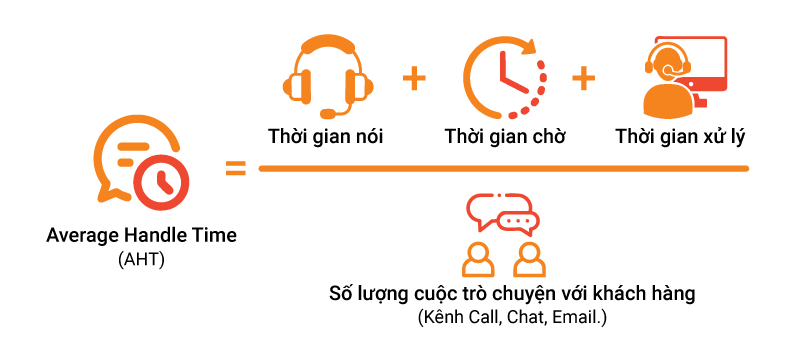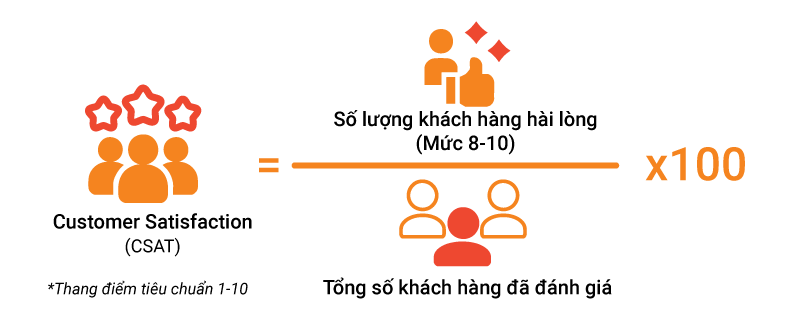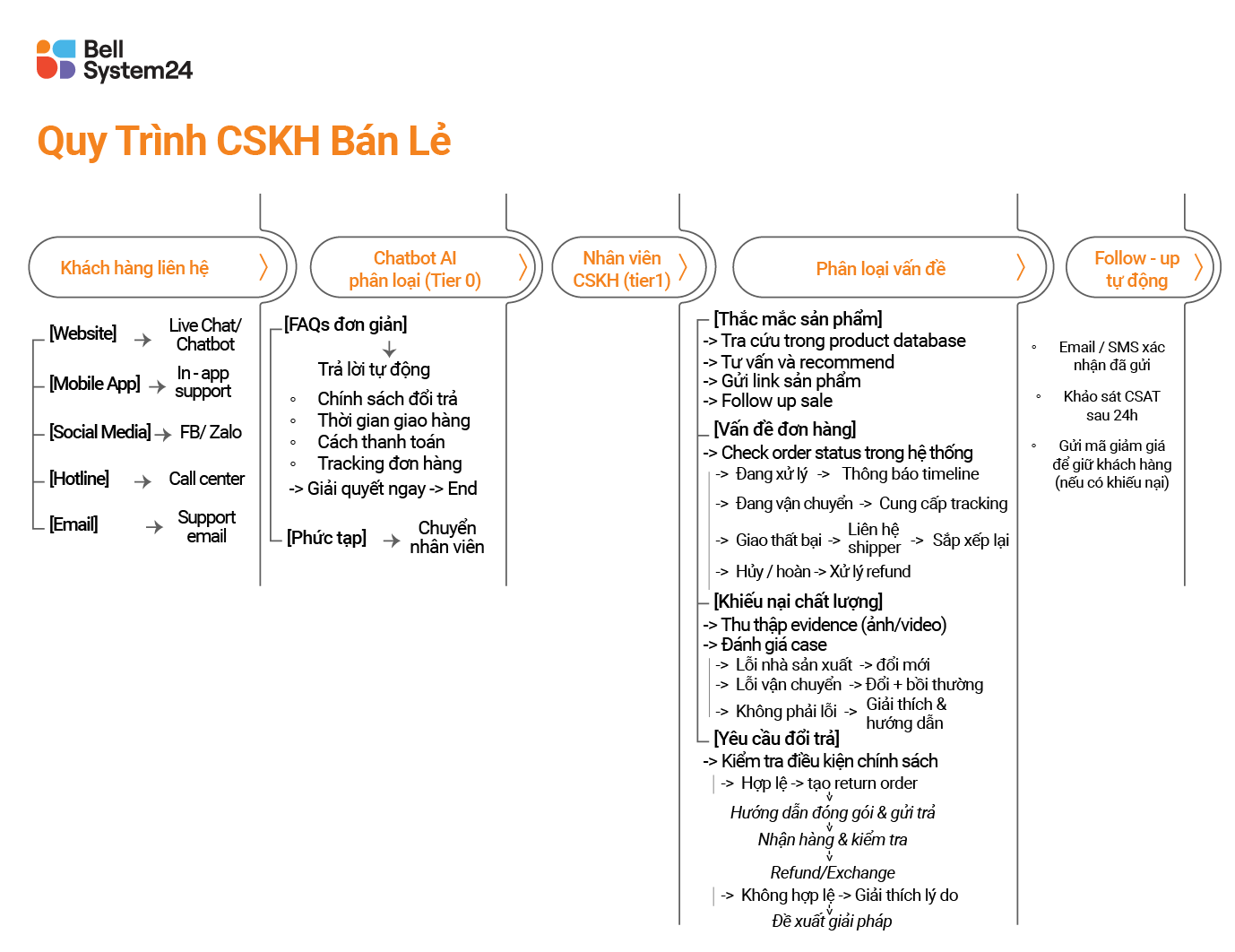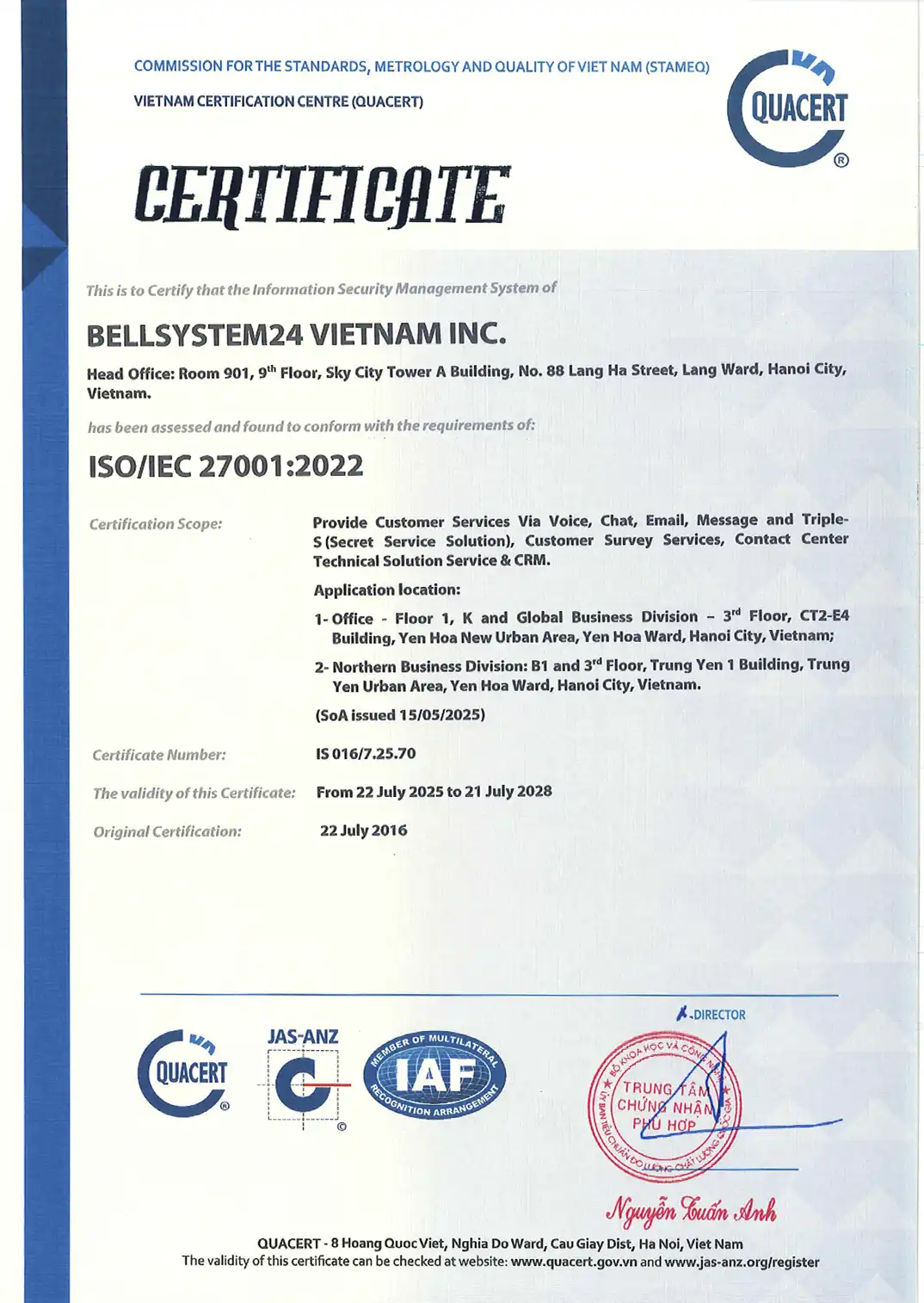Effective telesales workforce management is a crucial part of a company's strategy. Below are six key metrics that help managers accurately assess telesales performance.

1. Customer pickup rate
The percentage of customers who answer the phone is considered the "gateway" that determines the success or failure of telesales.

Factors affecting the percentage of customers answering the phone in telesales
Data source quality
- Ensure data accuracy
- Select the right customer segment
- Classify leads (hot leads, warm leads, cold leads) to determine the appropriate approach.
See also: How to make cold calls in telesales
Time of call
The timing of the call depends on the characteristics of the customer base, typically when customers are free. Do not call too early, too late, or repeatedly at inappropriate times.
2. Percentage of customers who talk for more than 15 seconds
This metric reflects the quality of telesales staff interactions and relates to many aspects of the telesales campaign, including:
- Communication skills for initiating a call
- The level of customer interest reflects the suitability of the target customer base.
- The telesales script is not suitable.
Many Professional telesales unit commonly use the system IVR To interact with customers automatically, then transfer the call to a call center agent if the customer requests it.
See also: 6-step process for script developmentelesale
3. Average Handling Time (AHT)
AHT (Average Handling Time) is the average time an operator needs to complete an interaction with a customer.

The meaning of AHT in Telesales
Evaluating call center agent productivity
- Low AHT: Fast call time, but if too low, risk of employees skipping the customer persuasion stage
- High AHT: Usually reflects better call quality, but if too high, it can waste time.
Evaluate call effectiveness
- The appropriate AHT (depending on the product) usually reflects high closing efficiency.
- Low or excessively long AHT: Often reflects low sales closing efficiency, indicating poor telesales scripts and skills.
Telesales process
- An optimally designed telesales process will have a reasonable AHT time.
See also: How to handle customer rejection
3. Conversion rate
The conversion rate represents the percentage of successful calls (achieving the target action) compared to the total number of calls made.
 This metric varies depending on the industry and the nature of each project. For example, for calls selling household products or inviting people to try a free spa experience, a good conversion rate would be 20-35%. For industries that require a high level of trust from customers and where the nature of the product is difficult to access, such as insurance and technology, a conversion rate of around 10-15% is considered good.
This metric varies depending on the industry and the nature of each project. For example, for calls selling household products or inviting people to try a free spa experience, a good conversion rate would be 20-35%. For industries that require a high level of trust from customers and where the nature of the product is difficult to access, such as insurance and technology, a conversion rate of around 10-15% is considered good.
4. Customer retention rate
Retention rate (RT) is an indicator that measures the percentage of customers who return to use a product or service after making an initial transaction. This indicator assesses customer loyalty and the effectiveness of after-sales customer service.
Unlike conversion rates, retention rates in the SaaS, insurance, and finance industries are typically high (often 70% and above), as these products are difficult to get used to, and users tend to stick with them if they are satisfied. Meanwhile, for the retail and FMCG industries, an RT of 50% is considered good, due to the fast-moving nature of consumption, the presence of many suppliers, and the ease of getting used to new products.

5. Customer referral rate
Customer referral rate (CRR) is the percentage of customers who recommend a product to others. This is an important metric because it not only measures customer satisfaction but also indicates the effectiveness of customer acquisition and retention strategies.
Businesses can measure CRR by conducting direct surveys via phone calls.

What is a good CRR?
- CRR on 20-30% is a good CRR level
- A CRR below 20% is not good enough. The company needs to improve its processes, telesales scripts, and customer care methods.
6. Customer Satisfaction – CSAT
This is an index that measures the level of customer satisfaction after using the company's products and services.
CSAT is a quantitative metric, typically collected through customer surveys. A high CSAT indicates greater customer satisfaction.

A good CSAT score often depends on the specific context and industry. Below is a reference score:
- A score above 80% indicates a very high level of satisfaction and shows that customers are satisfied with your service.
- 70% – 80% is an acceptable level of satisfaction, but there is still room for improvement.
- A score below 70% may indicate a serious problem, requiring a review of strategies and processes to improve the customer experience.
To measure CSAT in telesales activities, there are several methods:
- Call survey
- Collect feedback
- Analysis of results
Overall performance indicators
Revenue
Revenue is the simplest metric for evaluating the overall effectiveness of telesales activities, helping to determine the success of calls in generating revenue for the business over a specific period of time (day, week, month).
Businesses can measure types of revenue such as:
- Total telesales revenue
- Revenue per product line
- Average revenue per customer
- Contract renewal revenue
P&L ratio
P&L (Profit and Loss Statement) is an important financial indicator for evaluating the profitability of the telesales channel.
- Profit: Calculated by taking the total revenue from successful telesales calls and subtracting the total costs of implementing telesales activities.
- Loss: The amount of expenses exceeding the profits earned, meaning when the costs of telesales activities are higher than the revenue generated.
The P&L ratio in telesales is often used to determine whether a telesales campaign is profitable. P&L ratio = Total telesales profit / Total telesales implementation costs
- If the P&L ratio is greater than 1, it means the campaign is profitable.
- If the ratio is less than 1, it means the campaign is losing money.
The costs incurred to operate a telesales team include salaries, facility costs, telephone charges, customer management software, training fees, and other administrative expenses.
Businesses seeking to build a professional, experienced, and well-trained sales agent team to conduct telemarketing and telesales to target customers should contact the hotline immediately. 1900 1739 or email contact@bell24vietnam.vn







